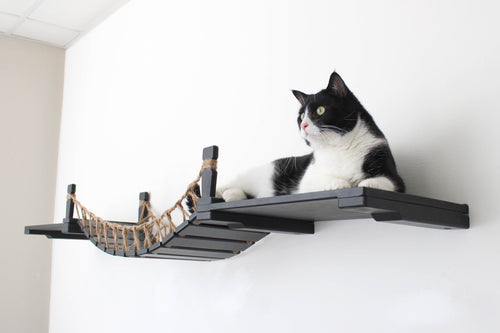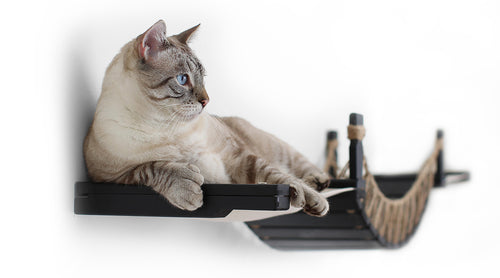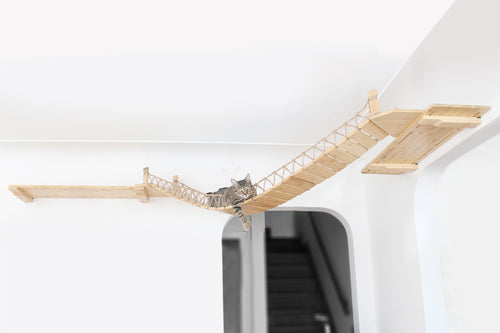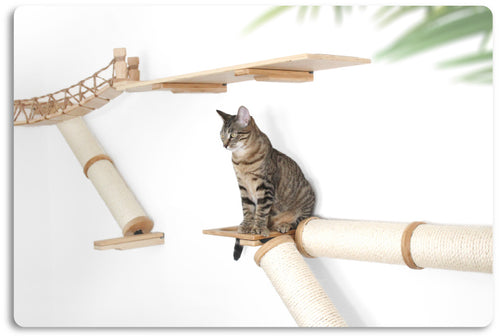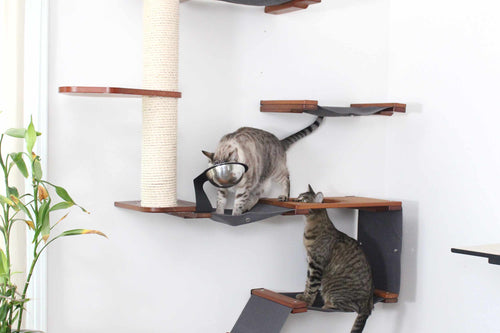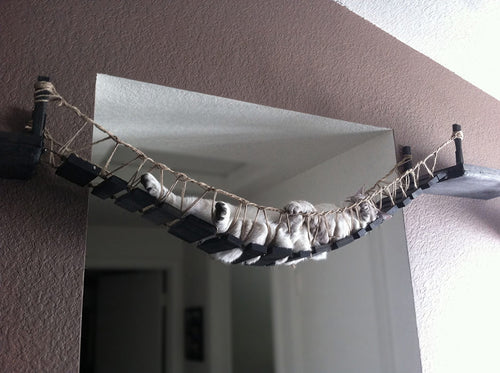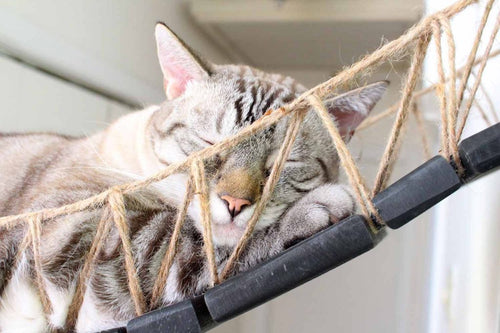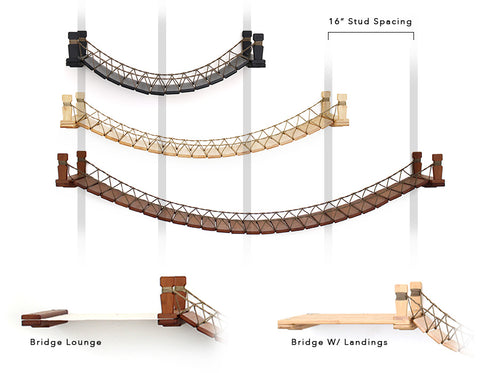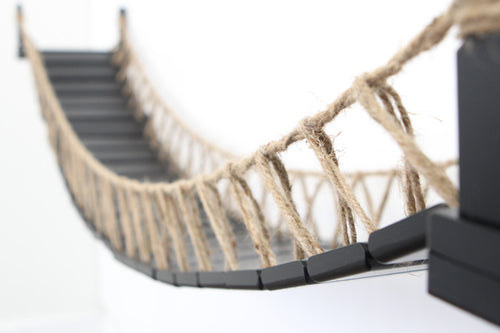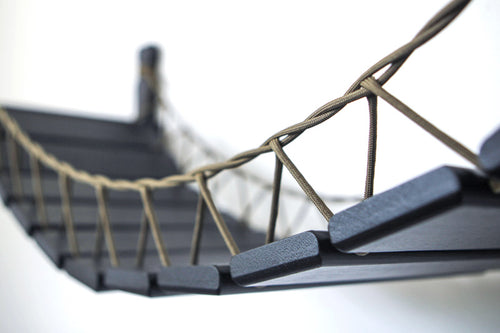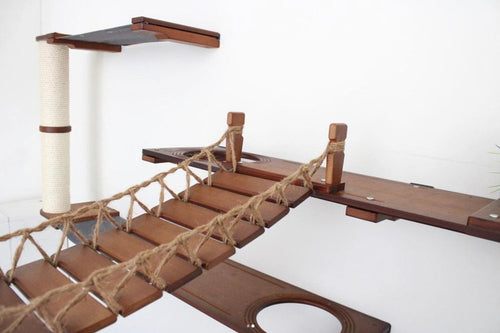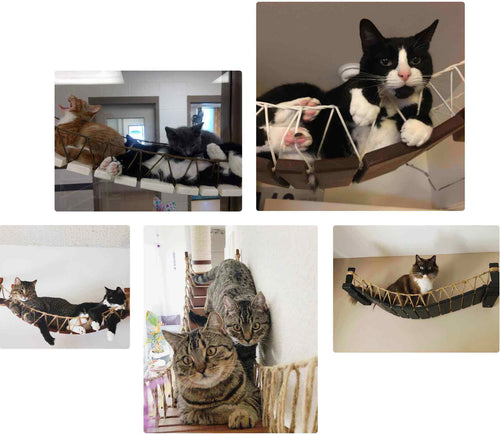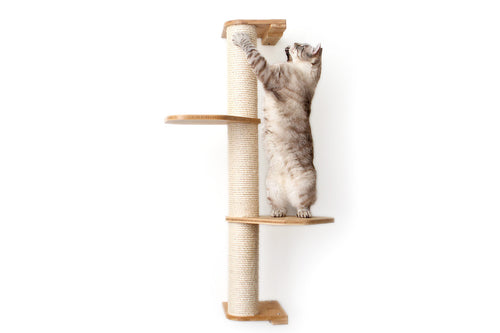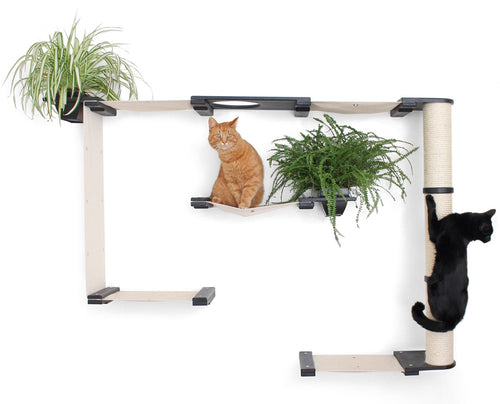Cat Enrichment Explained. Activities, Ideas & Benefits
Cats are complex creatures, and thrive in environments that best replicate wild behaviors. For our domesticated cats this means enhancing their quality of life by providing environments that stimulate their natural behavior. Behaviors such as foraging to eat, social contact, predatory outlets, climbing, and problem solving are all natural behaviors for cats. The goal of enrichment is to increase natural behavior diversity and to introduce these new experiences in a way that is not scary and does not cause stress.
What is Feline Enrichment?
Without enrichment, cats can develop behavioral issues like aggression, anxiety, attention-seeking, urinating or defecating outside of the litter box, eating disorders, or other disorders like over-grooming or scratching. The animals most at risk for these types of behaviors are captive animals in zoos and sanctuaries—and our own pets.
In the distant past cats went through an evolutionary shift that was accelerated by domestication by humans. Feline welfare has changed with improved housing, diet, and care. Unfortunately, cats have lost access to many natural behavior outlets. Before domestication, cats lived, hunted, climbed, and explored outside where they had a rich diversity of experiences. While domestic cats have a safe environment indoors with humans, they are happiest in an environment that stimulates outdoor instincts.
Instead of ushering cats outdoors, the compromise is to enrich their environment in a manner that allows them to practice their innate behaviors inside the safety of their home. There are endless ways to enrich your cat’s life.
Replicate a Cat's Feeding Behavior
Natural feeding behavior involves seeking out the food available to them. To help stimulate this instinct, you can use food puzzles, interactive toys, or hide small bowls of food among the cat’s living area—like their cat furniture or in their hiding spots. The idea is that your cat will spend a portion of their day activating their foraging instinct by hunting for their food. This is especially helpful if you’d like your cat to explore a particular area more.
Start out easy with any new enrichment plan. Try hiding food in places they will easily find it and then slowly change the hiding place to a more challenging location. Increase the challenge by incorporating boxes, bags, or plastic cups. Your imagination is the limit! You know your cat best, so remember to keep your cat’s skills and abilities in mind.
Predatory Outset
Domestic cats are still predators. They thrive on this instinct and need to practice hunting in a positive way or their practice may turn to more inappropriate things like your feet, your furniture, or other cats in your home.
Novelty is important when determining the right predatory play for your cat. Rotating the toys every few days will ensure that your toy stash remains new and interesting. If you notice that one of your cat’s favorite toys is being ignored, try putting it away and swapping it out for another toy.
Cats also love to watch a toy in motion, so don’t be discouraged if your cat doesn’t physically interact with the toy. Watching and stalking a moving toy is still a fun and stimulating experience for cats. Your cat will tell you what is an enriching experience for them through their interest, attention, and interactions.
Social Interaction With Your Cat
We get along well with cats because they are social creatures. They thrive with daily interaction with humans or other pets. Natural social actions can include mutual grooming, resting together, and playing together. Continue to build a relationship with your cat through play and physical affection.
Physical affection, like petting, is two-way communication. Take care to listen to your cat when petting them. Pet for 3 to 5 seconds then wait to see if your cat solicits more attention with a head nudge or maybe by pawing at you. Listening to your cat’s method of communication will increase your relationship without overstaying your “petting welcome.”
Providing Your Cat With Vertical Space
Our domestic cats’ wild relatives hunt and rest in trees as well as on the ground. Cats feel safe and secure when they are high up. In many zoos and sanctuaries, providing vertical space is a requirement in humane housing of smaller wild felines. Having vertical space helps with anxiety because your cat can fully let down their guard when sleeping which helps with stress recovery.
In addition to being a stress relieving element in your cat’s environment, adding vertical space can also reduce stress in multi-cat homes. Your cats will have more space to move, hide, and sleep, resulting in less competition with other cats.
The location of their vertical furniture matters as well. Place their furniture by windows to increase their visual stimulation and in quiet places to ensure they feel safe when sleeping. If feasible, try rotating the furniture's locations or adding new furniture to an existing setup to maintain novelty and generate interest.
Scratching and Deep Stretching
Providing appropriate scratching items (whether vertical or horizontal) is essential in maintaining your cat’s health as well as creating a positive outlet for a natural behavior. Scratching is a type of communication, so be sure to put their scratching item(s) near a window, sleeping area, or a door. This will give them an outlet in spaces they enjoy and feel most comfortable.
Cats enjoy scratching items made of sturdy material like wood, sisal rope, rough fabric, and cardboard layers. Training your cat to use an acceptable scratching item is easier than one might think. Put an incentive on the item like catnip, treats, or toys and then reward your cat with treats each time they scratch the preferred item.
Note: Do not manually move their paws over the surface you want them to scratch. This can create the opposite effect and cause your cat to become anxious of that item.
Other Environmental Enrichment
Adding new and interesting elements to your home will keep your cat curious and physically active. Other ways to enrich their environment are including cat-friendly plants like cat grass (an easy to sprout grass that’s safe for cats to eat), a cat drinking fountain, a bird feeder outside their favorite window, a Catio (an enclosed outdoor cat porch), or a cat stroller (if your cat is the adventurous type).
An enriching environment allows your cat to harness their natural behaviors and instincts which will increase their overall welfare and help to prevent mental and physical disorders. Very little is better than watching our cats enjoy the things we’ve given them to explore and play on. When our cats are happy, we are happy because they contribute to our quality of life too.
Research
AAFP and ISFM Feline Environmental Needs Guidelines
Artificial prey as behavioral enrichment devices for felines
Using Environmental and Feeding Enrichment to Facilitate Feline Weight Loss
Environmental Enrichment: Practical Strategies for Improving Feline Welfare

